Suspending disbelief is all-important when you first enter the Discworld; if you like your literature straightforward and true to life then perhaps Terry Pratchett’s series of fantasy novels is not for you.
If you aren’t prepared to believe that a realm can exist on a flat disc resting on the backs of four enormous elephants (they themselves are balanced carefully on the back of a giant turtle called Great A’Tuin) then you certainly aren’t ready for the manic exploits of Discworld and all its eccentric and comic characters.
The enormity and depth of detail of the Discworld make it impossible to condense all the details into one short article so I’ll have a go at giving you an overview of the mayhem.
Beginning with ‘The Colour of Magic’ in 1983, the series is now 40 novels strong; over 80 million copies have been sold worldwide, in 37 languages. The books are enormously popular – a 2003 survey by the BBC, called The Big Read, featured 14 Discworld books in the top 200, with four making it into the top 100. Pratchett was the best-selling author in the UK during the 1990s, and new Discworld novels still top the Sunday Times lists.
The series is well recognised for its elaborate covers; the first 26 books published in Britain (Harper Collins’ US editions used different artwork on the sleeve) were illustrated by artist Josh Kirby, who also did poster art for Star Wars Episode VI: Return of the Jedi and Monty Python’s Life of Brian. Kirby died in 2001, since when fellow English artist Paul Kidby has created the pictures.
Discworld itself is approximately 10,000 miles wide; the area around the edge of the disc is known as the Rim (this has a more tropical atmosphere as it passes closer to the orbit of Discworld’s sun) and the central region is called the Hub (complete with ice and snow covered mountains). Included in the Hub is a 10 mile high rock spire called the Cori Celesti, where the gods of the Disc live (their home is called Dunmanifestin – hee).
Four main continents divide the Disc: the Unnamed Continent (this is where most of the Discworld books are set, and is home to the city of Ankh-Morpork – more of which in a minute); Klatch, which is famous for its very strong coffee that is used to bring its drinkers to a state of ‘knurdness’ (it would take too long to explain... ); Fourecks – which is also called EcksEcksEcksEcks – an Australian-like island filled with terrifying wildlife and finally the Counterweight Continent, which lies on the opposite side of the Disc from the Unnamed and Klatch and is weighed down by large amounts of dense heavy metals. (Hence ‘Counterweight’, see?)
Many scenes in the Discworld books take place in Ankh-Morpork; a large and bustling city which is prone to much confusion, violence and chaos. It is the location of the Unseen University; a faculty filled with sluggish and incompetent wizardry, a primate librarian and books with a life of their own. It is the trading centre of Discworld and also, interestingly, has the largest population of dwarfs outside their natural homeland of Ȕberwald.
There are a multitude of colourful, eccentric characters that habit these cities and continents but my favourite individual in Pratchett’s frenzied creation is Rincewind: a spineless and talentless wizard who constantly finds himself in the midst of danger, despite doing everything he can to avoid any kind of action whatsoever. And action there is; Rincewind has a lot of people trying to do him harm at any one time, so he spends a lot of his life trying to outrun them all.
Rincewind features in eight of the 40 (so far) Discworld books and is often accompanied by several other characters.
Twoflower is Discworld’s first tourist; he’s assigned Rincewind as a guide and the two career through some fairly ridiculous - not to mention desperately dangerous - situations together. Accompanying them is the loyal but psychopathic Luggage: a chest with legs that not only carries its owner’s belongings, but will also eat anybody that threatens them. Bet you don’t get that with your Samsonite, do you? The Luggage belongs to Twoflower at first but once he and Rincewind part company in a later book then the wizard is the lucky new owner of Discworld’s most vicious suitcase. It follows him everywhere, whether Rincewind likes it or not.
Cohen the Barbarian is a tough guy; he is recognised across the Disc as a true warrior, albeit a now elderly one. He can handle rough situations without breaking a sweat, although he finds living in a more modern age problematic; the more civilised the society, the less good old-fashioned battling there is to be done. He is also a very literal person; let’s just say that using the phrase ‘I would rather die than…’ is unwise in Cohen’s presence. A ladies’ man, Cohen has plenty of children scattered about the land, with only Conina appearing in person in any of the books. She’s a would-be hairdresser who has inherited her father’s talent for, well, maiming.
There are many other notable, interesting and curious beings inhabiting Discworld but to describe them all would probably fill the same amount of pages as the entire set of books has already. Which would take quite a while. Roughly 31 years, if I was as good a writer as Mr Pratchett. Which I’m not, so it would undoubtedly take me a lot longer. Which is quite a wait. You’d be better off reading his versions, if I’m honest. So instead, I’ll just mention my other favourite, Death.
Death has been portrayed many times in literature and on screen (The Seventh Seal and Bill & Ted’s Bogus Journey spring to mind first), and Death in Pratchett’s books is a marvellous parody of all of these. With the exception of two, he appears in all the Discworld books, all seven feet of him on his horse Binky. He appears in a traditional role; appearing before somebody to usher them from the world when their time is up and doing it with his own particular sense of humour:
‘Death was standing behind a lectern, poring over a map. He looked at Mort as if he wasn’t entirely there.
You haven’t heard of the Bay of Mante, have you? he said.
“No, sir,” said Mort.
Famous shipwreck there.
“Was there?”
There will be, said Death, if I can find the damn place.’
Standing aside from the main novels, a further series delves deeper into Discworld’s existence: The Science of Discworld is a set of four books written by Pratchett along with science writers Jack Cohen and Ian Stewart. The first book was published in 1999, followed by The Science of Discworld II: The Globe in 2002, The Science of Discworld III: Darwin’s Watch in 2005 and The Science of Discworld IV: Judgement Day in 2013. All were a mix of alternating chapters: a ridiculous Discworld tale and then a sincere scientific explanation, with the intention of enlightening the reader in a comical way.
Each fictional chapter would involve Discworld characters observing some aspect of the real-life planet Earth from their completely different perspective. Pratchett, Cohen and Stewart would then use this as a springboard to explain the concepts in an entirely sensible way. Add to this a plethora of other Discworld related books, stories, games, guides and maps and you’re on your way to discovering all there is to know about this complex and frenetic world. Read them all in their entirety and you could be dropped into an Ankh-Morpork alleyway at night and have every chance of making it out alive. Hopefully.
As the Discworld novels paint such a multi-layered and meticulously detailed vision of another world it must be a vastly difficult task to begin to attempt to do them justice on screen, but it has been attempted several times. Hogfather (2006) and The Colour of Magic (which was an amalgamation of both The Colour of Magic and The Light Fantastic and aired in 2008) both featured the versatile David Jason in the lead role (as Albert and Rincewind, respectively) and was commissioned by Sky, as was Going Postal in 2010. Pratchett himself had cameo roles in all three. Cosgrove Hall (the cartoon geniuses behind Dangermouse and Count Duckula) made six animated versions of two books in the mid-nineties, a couple of small production companies have made films of two others, and the BBC has adapted several for radio.
And there I’ll have to leave it. There is so, so much more I could write about: the clever interweaving of real-world topics, trends and genres into the Discworld stories; the parodies of popular Earth fiction that often pop up within the text or even the fact that Ankh-Morpork is twinned with Wincanton in Somerset, but quite frankly there are other things I need to do – like eat and sleep. So I urge you to discover them for yourself: add your weight to the Great A’Tuin and his elephants and step onto the Discworld. You won’t regret it. Although you won’t get much else done if you try to get through them all in one go, obviously.
Prometheus Award and Carnegie Medal winner Pratchett has said that he would like his daughter to continue expanding the Discworld library when he is no longer able to. With the rich and diverse world he has created then there should be no shortage of potential stories for her to continue the magic with.
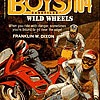
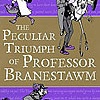
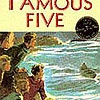
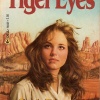

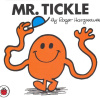

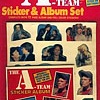

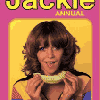
Do You Remember Discworld?
Do You Remember Discworld?